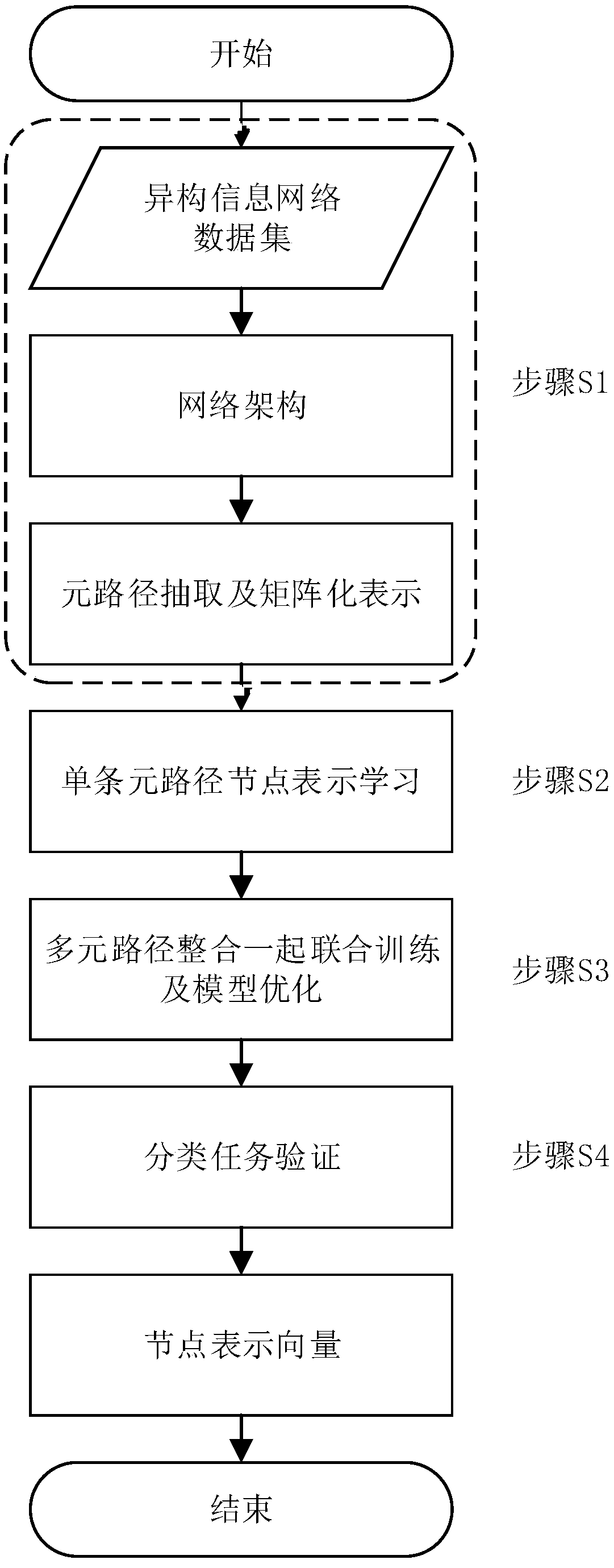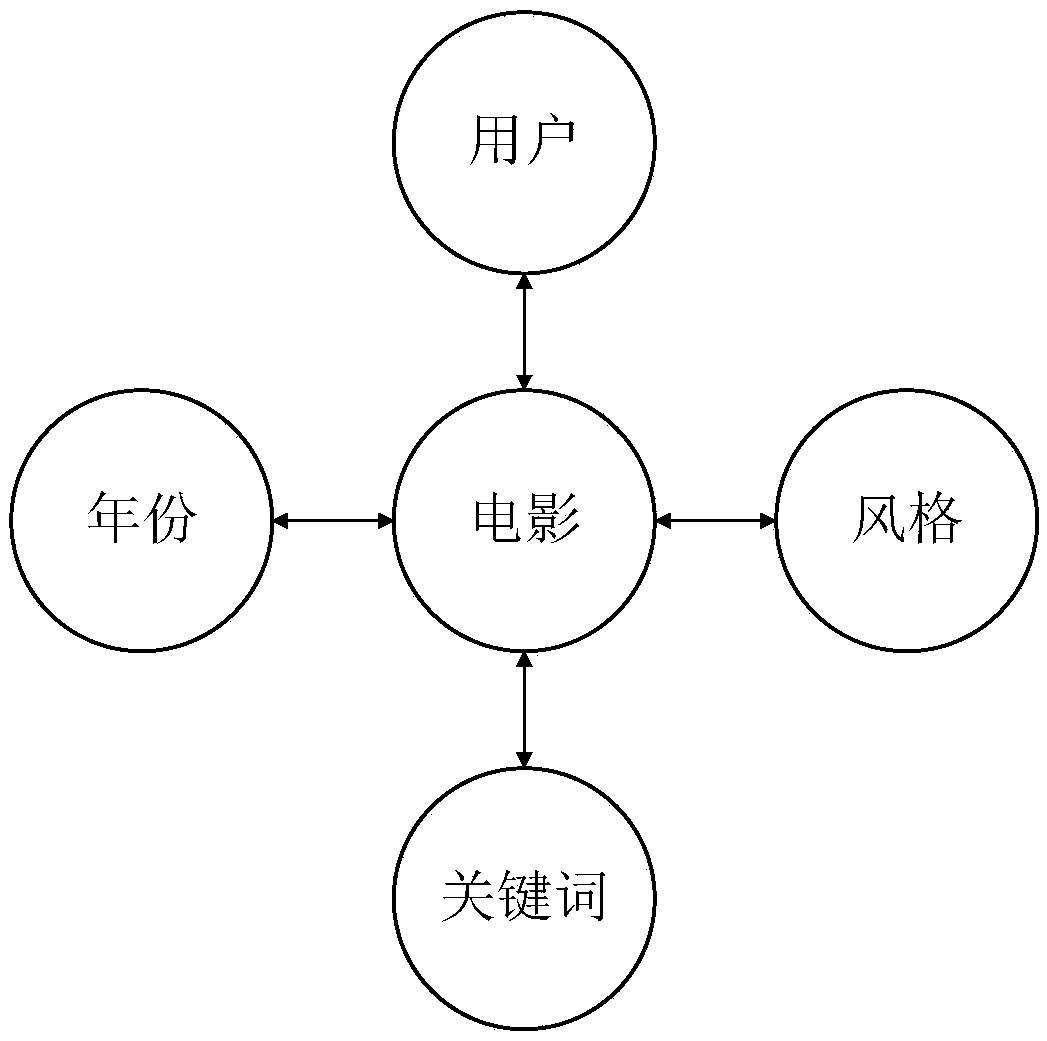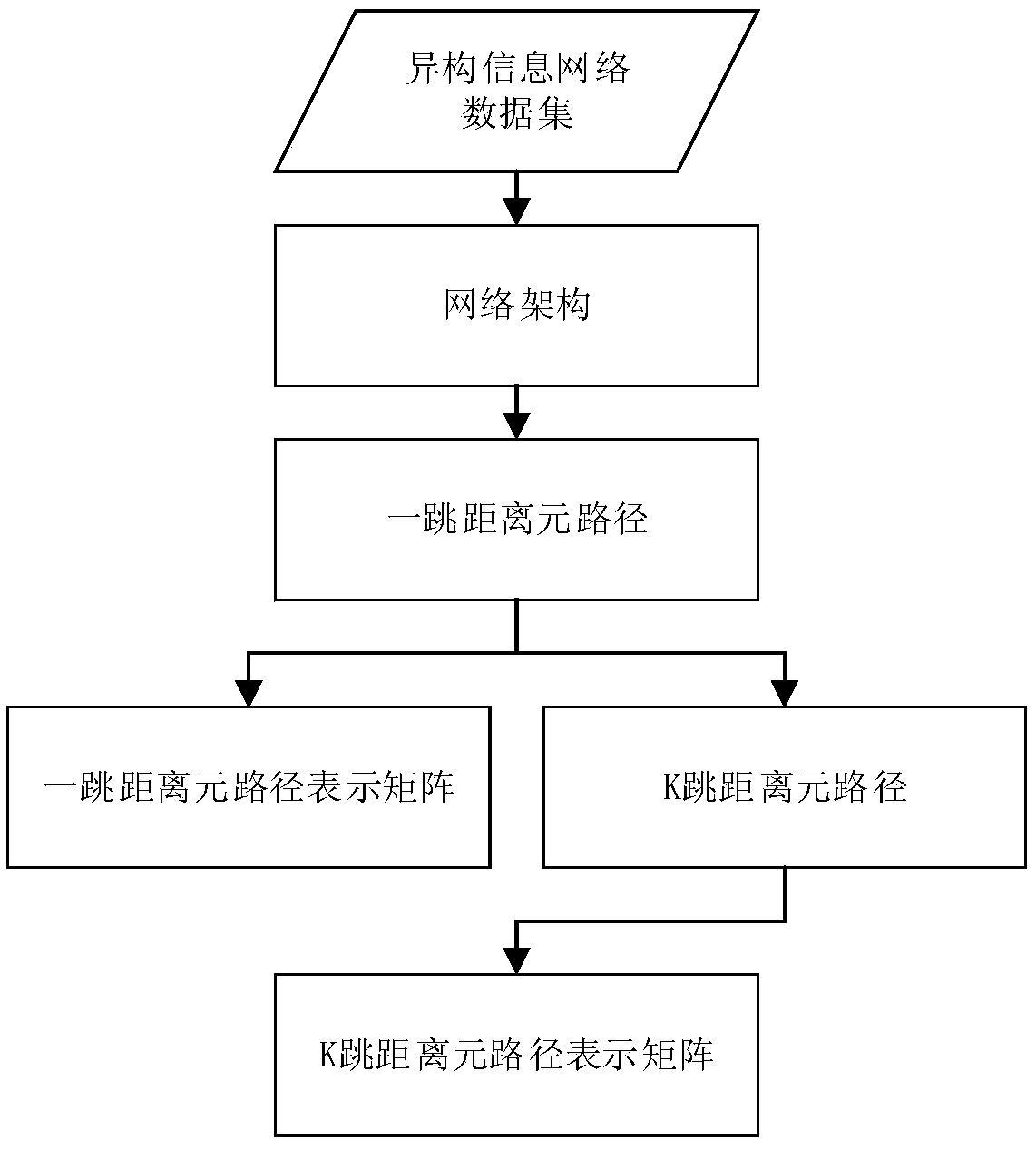Heterogeneous network node representation learning method based on meta-path
A heterogeneous network and learning method technology, applied in the field of meta-path-based heterogeneous network node representation learning, can solve the problem of insufficient processing ability of complex heterogeneous network graphs, and achieve high classification accuracy
- Summary
- Abstract
- Description
- Claims
- Application Information
AI Technical Summary
Problems solved by technology
Method used
Image
Examples
Embodiment
[0074] The above method will be described in more detail through an embodiment below.
[0075] figure 1 As shown, the meta-path-based heterogeneous network node representation learning method of the present invention includes the following steps:
[0076] A: Construct a network architecture based on the heterogeneous information network graph; then obtain multiple meta-paths of different types from the heterogeneous information network according to the network architecture; then quantify the meta-paths mathematically to obtain the matrix representation corresponding to each meta-path.
[0077] Specifically, step A is realized by performing the following steps:
[0078] A1: Construct a heterogeneous information network dataset, crawl movie description information, user comment data and divided movie style systems from existing movie review websites. Integrate the crawled data into a heterogeneous information network graph about movies, which contains various types of nodes an...
PUM
 Login to View More
Login to View More Abstract
Description
Claims
Application Information
 Login to View More
Login to View More - R&D
- Intellectual Property
- Life Sciences
- Materials
- Tech Scout
- Unparalleled Data Quality
- Higher Quality Content
- 60% Fewer Hallucinations
Browse by: Latest US Patents, China's latest patents, Technical Efficacy Thesaurus, Application Domain, Technology Topic, Popular Technical Reports.
© 2025 PatSnap. All rights reserved.Legal|Privacy policy|Modern Slavery Act Transparency Statement|Sitemap|About US| Contact US: help@patsnap.com



